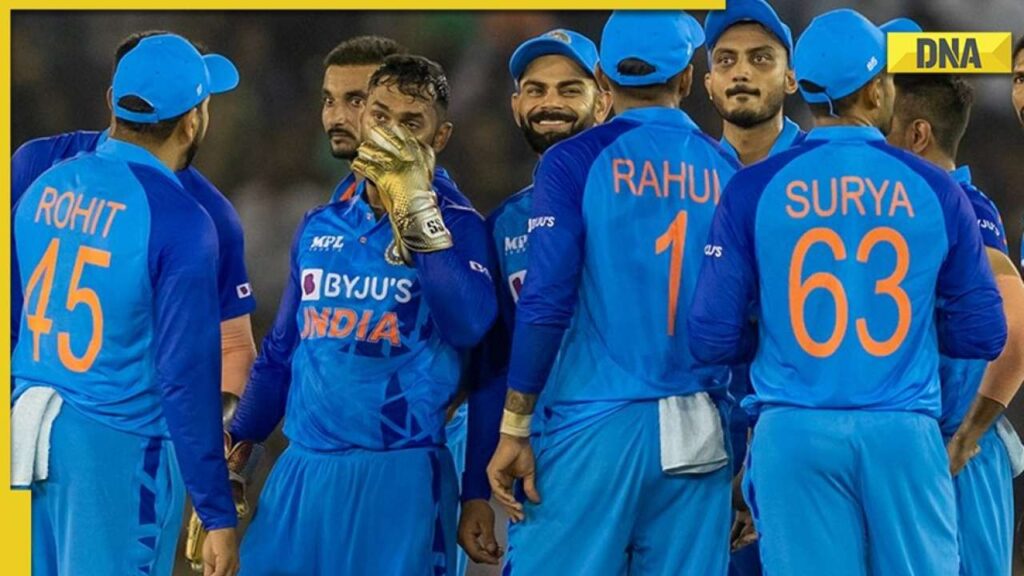There are multiple factors that could be responsible for India’s poor performances.
Bilal Ahsan Dar
In the first Test of the ongoing bilateral series that began on December 14, India inflicted a crushing defeat on home team Bangladesh at Chattogram. While India’s performance at test level has been reasonably satisfactory, the same cannot be said about its performance in the white ball cricket over the last few years.
It was not so long ago that star all-rounder Hardik Pandya claimed: “I think India can pick two more teams and win any tournament in the world.” He was referring to the bench strength that India has built in the recent years.
BCCI is the richest cricket board in the world. The last IPL was worth more than $6bn. Its franchises have already taken the leagues to the UAE and South Africa and are eyeing the Big Bash and the Hundred in Australia and England. BCCI is a member of the big 3 who run the game today. Yet, with that power and wherewithal at its disposal, India hasn’t been able to stamp its authority on the field.
It has been 11 years now when they last won a world cup trophy – the 2011 World Cup. Since then, they lost the 2014 T20I final, 2015 World Cup semifinal, 2016 T20I World Cup semifinal, 2017 Champions Trophy final and 2019 World Cup semifinal. The World Test Championship final in 2021 against New Zealand was no different for India. In 2021 T20I World Cup, India was knocked out in the group stage.
Though, during this period, the Indian team has been among top-five teams across formats. This raises the eyebrows as to why the team hasn’t been able to deliver when it really matters.
This year, the team faced an unceremonious exit from the Asia Cup, followed by semifinal defeat to England in the T20I World Cup. Then an ODI series loss to New Zealand and now another ODI series loss to a lower ranked Bangladesh.
Former England captain Nasser Hussain, while talking about this inconsistency, said: “Indian team doesn’t play fearless cricket. You have got to go out and express yourself. They have got so much of talent.” While this may be one of the factors, which probably stems from the overly high expectations of the fans, a close observation reveals there are multiple factors that could be responsible for inconsistency and flop shows when it comes to big games.
Frequent Experimentation
Too much of experimentation has done more harm to the winning combination than any good. In the last three years, 35 players have debuted for India and the team used as many as 34 players in 22 ODIs in 2022 alone. In all likelihood, this frequent experimentation doesn’t allow players to settle down and feel secure in the side, thus affecting their performance. It also means sometimes an in-form player is rested and replaced by another, and by the time he returns to the side, his form has dipped.
IPL Performance
There can be no denial that IPL gave India the likes of Jasprit Bumrah and Hardik Pandya or the most devastating batsman in the world today, Surya Kumar Yadav aka SKY. It gave a new lease to the career of players like Dinesh Karthik and gave India the bench strength of the likes of Washington Sundar and Shardul Thakur, both of whom helped the team beat Australia at Brisbane on debut. IPL produced players who know playing in the presence of big crowds and in pressure cooker situations. That, needless to say, should have made the Indian team the most dominating on the field. What is that extra bit that the players are missing at the international level that affects the team’s performance adversely? Maybe a lack of acknowledgement of the value of the Indian cap and the responsibility that comes with it. Several former greats like Sunil Gavaskar have been voicing their opinion on this and advocating not to make IPL the yardstick, but rather make the players toil harder to earn the blue cap. The big money that the young players get may also be a factor that diminishes the urge to respect the responsibility that comes with wearing the blue jersey.
Too Much Cricket
Indian cricket schedule is probably the most chockablock among all the teams, from tours to home series and the IPL that lasts for months and requires continuous travel across India. Only recently, just after finishing their world cup tour to Australia, the team straightaway flew to New Zealand for a T20I and ODI series. They toured Bangladesh for another series. Although many key players were rested according to a proper plan, but again this leads to too many changes in the team, impacting the performance of the players.
Politics within BCCI
There have been a number of examples which suggest the Indian cricket has too much politics within its structure and outside as well where the BCCI has acted as an instrument. Given the enormous financial growth of the board by virtue of the IPL and popularity of the game in the country, Indian politicians have a keen interest in the board. Ideally, one would expect the BCCI to be run by former players and capable managers. Instead, the top-most positions by individuals with strong political connections. This nepotism in turn enables the BCCI to act as an instrument of Indian politics. According to the Lodha Committee established by the Supreme Court of India in 2015, there were broad conflicts of interest in the case of many individuals holding administerial posts at the BCCI. There have been several reports of nepotism in selection and cases of caste discrimination as well.
Bilal Ahsan Dar is a blogger and cricket buff.


